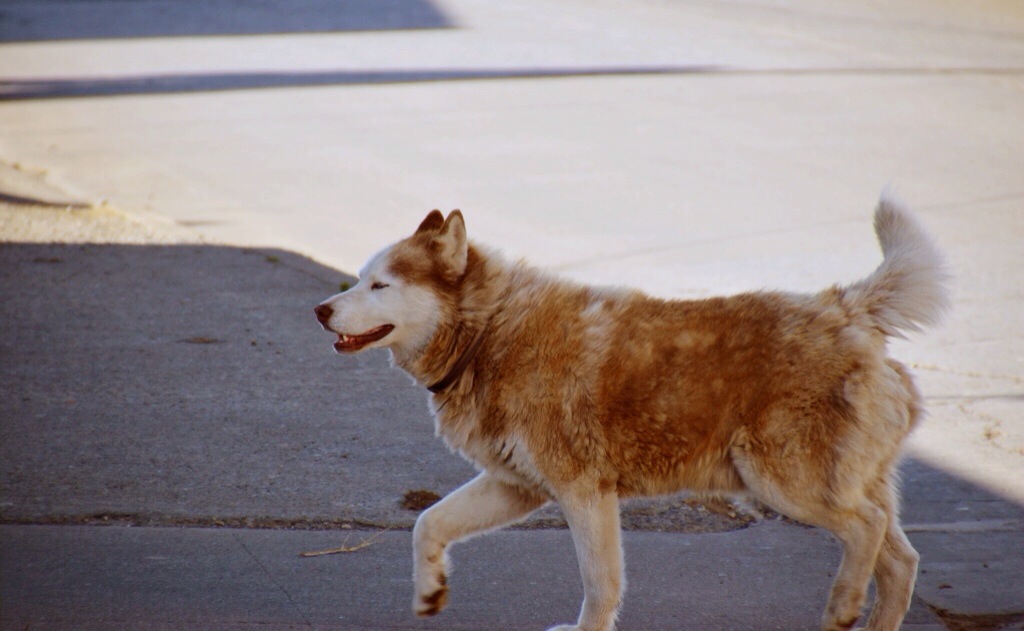
I’m the first to admit that I’m a bleeding heart when it comes to animals. I own three dogs and throughout my life animals of almost any ilk have captured my heart. That being said, I’m not fanatical about it. I don’t support militant animal rights groups, I don’t chain myself to trees and I’m not annoying about my support for animal welfare. But it does hurt me to travel the world and see animals abused in any number of ways, knowing that there is absolutely nothing I can do about it. One of the worst examples I’ve seen though happened in the city of Punta Arenas, in southern Chile.
I was in town for my flight to Antarctica to join a weeklong expedition of the icy continent and was excited to explore the southernmost city in Chile. Punta Arenas isn’t the sleepy hamlet I had expected; it’s a robust city of about 150,000 people and serves thousands of tourists every year who pass through either on their way to Antarctica or Torres del Paine National Park. I had a couple of days to kill, and I spent a lot of that time walking around, seeing the sights and getting a feel for the town. It was during those jaunts that I discovered something that disturbed me deeply.

Seeing stray dogs is not an uncommon occurrence around the world. I’ve seen them everywhere, and in particularly high numbers in Southeast Asia. But nothing prepared me for the sheer numbers of canines in Punta Arenas. They were everywhere, some alone and many others formed into small packs. They roamed the streets, frequented cafes and had an odd penchant for running after cars and motorcycles, barking along the way. I love dogs but know better than to approach a feral dog, for that’s what the pups in Chile had become. They weren’t just strays, they were born and bred on the streets and had definitely gone wild.
Chatting with people after the trip, I learned that this isn’t an odd occurrence in South America, but that Punta Arenas is a particularly extreme example. Thousands of dogs call the city home and aren’t just a health concern, they are a threat to safety. Feral dogs can be unpredictable, and the last thing I’d want to do is cross a pack of them on a lonely road at night.
I left Punta Arenas feeling sad, angry and frustrated. I was frustrated because although the problem was extreme, I never saw any local government workers doing anything about it. There were no dogcatchers or even welfare groups out trying to control the situation. I do understand that it’s a cultural issue, that convincing people to spay and neuter dogs in some parts of the world is a challenge. A friend of mine works with a US-based nonprofit that travels to places like Punta Arenas for that very reason, to spay and neuter dogs and make sure they’re not suffering.

It’s a big problem however, bigger than just one group can address. I’m upset that I felt so powerless, unable to do anything except watch the dogs take over the town, causing suffering not just for them but for tourists and residents alike. It’s a horrible situation that left such a bad impression on me, that I never want to return to Punta Arenas.
I know it’s not fair to say all of Chile or even South America is like this, I know it’s not. But places like Punta Arenas need to change, someone has to go in and educate the public about caring for dogs and why massive packs of feral canines is not a good idea. Until then, I will also look for ways to help, anything to ease the suffering of everyone involved, dog and human alike.
Have you been to an area with a disproportionately high number of stray dogs?

We just came back from Ecuador, and I had similar feelings about the stray dogs there – especially along the coastline where they roamed in packs and so many dogs were mangy, worm infested, and malnourished. I had the same thought – that they need a spay/neuter program. But I do think it’s partly a cultural issue. The local people had no problem with the amount of strays running around. They failed to see how tourists might be leery of packs of dogs or public health concerns. In some Ecuadorian cities, the dogs were better cared for than in others. In Quito, for example, a lot of people kept their dogs leashed and in cute little outfits, but there were still strays. I’m not sure what the answer is, but as with most issues, I suspect education is key.
Punta Arenas is not alone obviously. This problem is at its worst in South Asia as you would know but authorities there don’t catch or there is no charity working to save them. They simply give dogs poison after few months. Now, thanks to levels of corruption that poison doesn’t work and problem remains the same for most parts.
South America is full of them — even in the larger cities. I lived abroad in Santiago, Chile for 6 months in college, and it always baffled me to see how many were just roaming around. Surprisingly, however, my reaction was different — to me, the animals seemed well-fed and decently clean and happy. I didn’t see any noticeable signs of disease, parasites or malnutrition, but it’s always different for everyone.
When I was in Punta Arenas, and Puerto Natales in Chile, I didn’t see as many as you did, apparently. In fact, I’d say that the highest concentration of stray animals, bar to none, was in Paraguay, especially the capital city, Asuncion.
Interesting. I would think that you would have become inured to stray dogs and cats from your travels. I’ve been to Punta Arenas and did not think it any worse than anywhere else. And I really don’t like stray dogs, they scare me at night. One thing you must know is that when cities cull strays, they don’t politely spay/neuter–that is beyond their budget. They kill them. There is no softening the issue. I think there are far more egregious animal rights issues than strays. Zoos in developing countries should be abolished like shark finning and rhino poaching. I’ve seen animals cramped in cages outside restaurants waiting to be killed. Anyway, thanks for opening the discussion. Too often travelers are too eager to paint an overly rosy picture and they end up sacrificing honesty.
More than stray dogs, what upsets me when I travel is the way people treat animals. Our dog adopted us when we lived in Kenya because our compound was the only safe place for him, even when he was cold and shivering during the rainy season. I can’t save them all, but we did save him.
I’m definitely “a dog person”and me and the canine species tend to get along pretty well. But my goodness, those poor feral street dogs. I was chased on three separate occasions on my trip last year and I was saved by a local each time. Terrifying.
My first encounter of this was in eastern europe. probably not as bad as this but still heartbreaking. I wanted to take them all home and save them.
I’m little late to the conversation, but as I’ve spent a little time in Punta Arenas I wanted to chime in. While I too was taken by the dogs wandering the streets, I had the impression that most were taken care of to at least some extent. Most were reasonably healthy and unlike truly feral dogs most seemed comfortable and fond of humans. Indeed in a conversation I had with some locals I was told that most of the dogs had homes or at least a place where they went to sleep on a porch and be fed. So anyone reading this who is heading there don’t be concerned with roving packs of “feral” dogs
While I haven’t yet been to Punta Arenas (planning a trip there for early January on my way to hiking in Patagonia), I know I found a similar situation with stray dogs in Montenegro’s Durmitor National Park and in the city of Zabljak. It definitely took me aback at first, especially as a huge animal lover here in the US, but didn’t really seem to be a problem, and you get used to dogs coming from the streets to follow you along the way and then hang back as they see fit. Definitely an adjustment coming from the States, but a reminder that things (and especially with animals) aren’t always like what we’re used to or would like to see..It will be interesting to see Punta Arenas, though. Thanks for posting!
Until we received an email from a friend who has been living in Chile for six years, we had no idea of the appalling situation with dogs, in that Country. Our friend William has collected 45 dogs (yes forty-five) off the streets and has them living in his home which is, naturally enough, causing problems with his neighbours. I wish that there was something that we, as Australians, could do to urge the Chilean Government to address this very sad problem.
I just got back from Punta Arenas and completely fell in love with the stray dogs there (clearly so much I’m googling them and came across this old blog post). I was wondering if you found any organizations helping them? I am feeling very motivated to do what I can to make sure these animals are not forgotten.
I also have traveled to places that have heartbreaking conditions for animals. So now I research this topic before I plan a trip. My husband has been wanting to visit South America, but I am too much of a softy when it comes to doggies. On our last visit to the Caribbean, we spent much of our vacation traveling around with food and water for all the stray cats and dogs that were starving. I was just amazed how nobody seemed to be bothered by animals dying a slow, sad death.
December 2019
Been traveling in South America and the worse I’ve seen is in Punta Arenas. There was one pathetic looking dog breaking into restaurant trash bags. It literally broke my heart unable to help him.
Is there any way to bring one home to the U.S. or pay for a veterinarian to capture him and get him healthy and have him put up for adoption?
I have seen starving strays in Costa Rica that made me cry. Many strays in Asia. In Thailand the King asked people to be kind to animals and their stray dogs were well fed, sometimes too much.
Where can I donate money to help in Punta Arenas?
I spent over a $1000 to bring a 16 yr old stray cat home to Los Angeles from Oregon and then another $1000 to get him well. He is the most wonderful cat I have ever owned. My husband thinks I’m nuts but he didn’t say no.